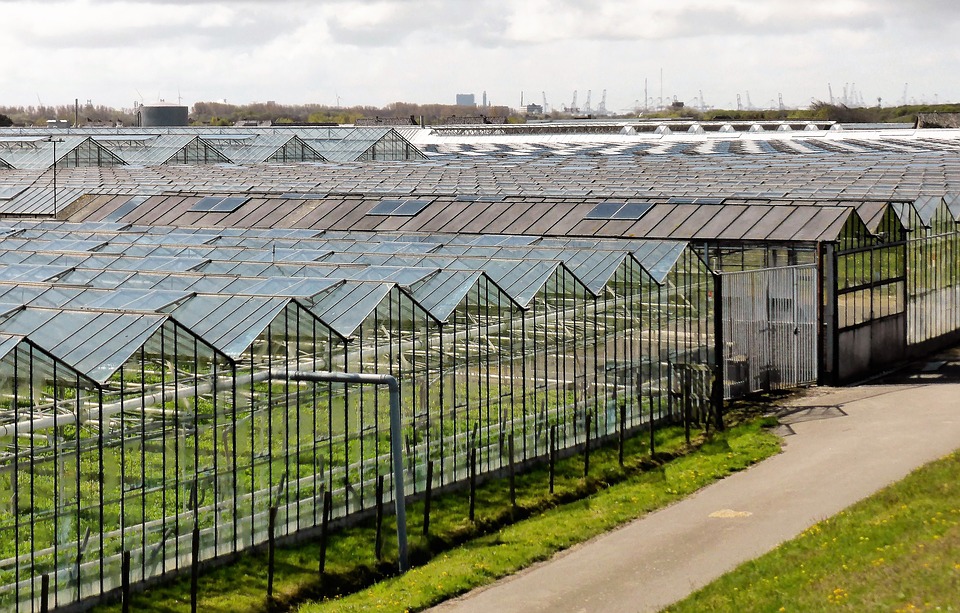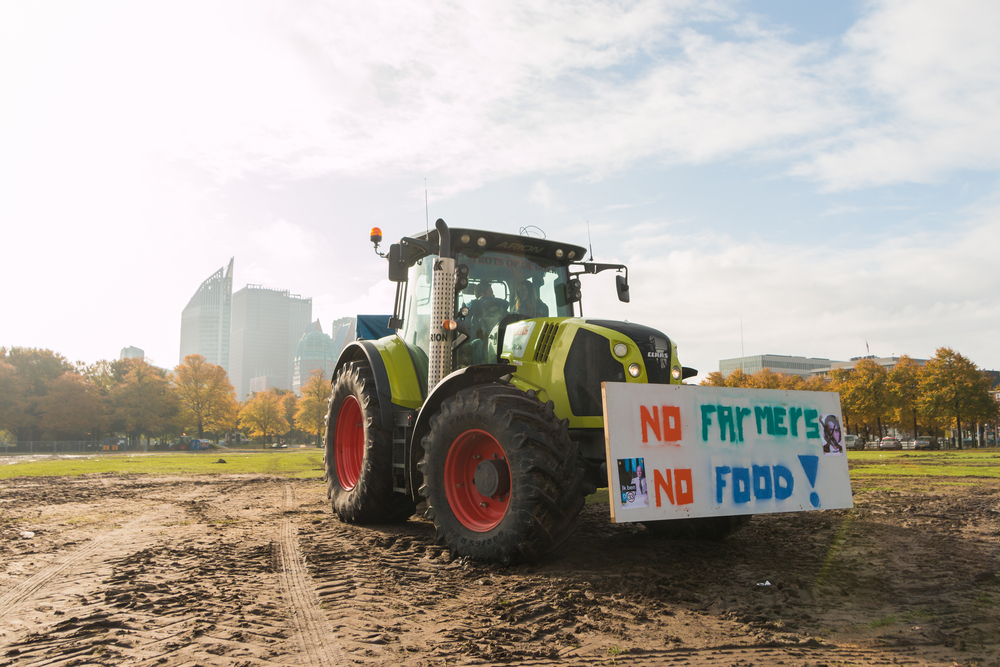Thanks to decades of innovation and hard work, the Netherlands is one of the world’s largest agricultural exporters — but the looming climate crisis is an ever-present topic influencing the agricultural sector, and the Netherlands is no exception.
With groundbreaking innovations around every corner, the Dutch are renowned for their agricultural progress.
How did such a small country become a top dog in food export, and how are they dealing with the world’s changing climate?
The Dutch agriculture industry is growing
Dutch agriculture exports rose 17% last year, which amounts to over €120 billion worth of goods — a record year for the industry and a proud Dutch moment.
You might have already seen one of these videos in which the Dutch prowess in agriculture, food exporting, and innovation was shown:
So, what has generated such an expansion?
Exporting Dutch agriculture: what and where?
In 2021, Germany was the largest international consumer of Dutch bio-products (€26.3 billion), followed by Belgium (€12.1 billion), France (€8.6 billion), and the UK (€8.6 billion).
Ornamental plants and flowers are the hottest export items for the Netherlands, raking in about €12 billion in 2021. Dairy products, eggs, meat, and vegetables profit over €25 billion combined.
READ MORE | GROW: Dutch design studio lights up the future of agriculture
With tons of income, nevertheless, the Dutch are also becoming increasingly (and painfully) aware of the climate impact of the agri-export game. This is one of the factors that pushed quite a few interesting Dutch agriculture innovations into the spotlight.
Dutch innovations: Farming for the future
Innovation, in general, has always been a key part of Dutch culture and society and has really helped in developing more modernised farming methods in the lowlands.

The R&D (research and development) expenditure in the Netherlands has more than tripled in the past 30 years. That’s around 2% of the nation’s GDP! So, no wonder the Dutch have a reputation for being innovative and forward-looking.
In 2023 alone, the Netherlands is expected to spend more than €12,400 on R&D and innovation.
READ MORE | 17 ideas that make the Dutch sustainability super-heroes
‘‘But how exactly are the Netherlands being innovative when it comes to farming?’’ We hear you ask. Here are our three favourite examples that also help the agriculture sector become more sustainable.
Sustainable Dutch bananas from greenhouses
The University of Wageningen grew its first crop of locally grown Dutch bananas using an alternative soil composite made of coco peat and rock wool. The process makes sure no fungus makes its way into the product through bad soil and overall creates a more efficient and effective banana growing process.
It’s examples like these that give us hope regarding the current global climate crisis — at least we know there are people out there doing their part! 🌏
Using food waste to feed farm animals
Naturally, with a globally increasing demand for meat comes a constant need to feed livestock. Although veganism is increasing in popularity, it also feels like it’s becoming a more polarising issue — as are most things. 🥲
But there is help. Dutch company Nijsen/Granico produce about 90,000 tons of animal feed a year entirely from human food waste and thus creates a far more sustainable meat production circle.

Isn’t it nice to know that even after being eaten, your food fuels another living being?
The floating farm in Rotterdam
In 2018, we wrote about Rotterdam’s new “floating farm“. The entire farm will be sustainable, feeding their cows with leftovers from local restaurants, collected by electric-powered trucks from GroenCollect.
The remaining feed needed will come from home-grown duckweed — how smart! Even the cow manure is collected and sold, making the floating farm quite sustainable. 💩
Dutch agriculture and the climate: Still a touchy subject
It’s no secret that the agriculture sector is one of the most problematic in terms of global emissions and climate change. That’s why the Dutch made an oath that goes a little like this: “producing twice as much food using half as many resources”.
Since the turn of the century, many farmers have reduced dependence on water for key crops by as much as 90%. Dutch farmers have also almost completely eliminated the use of chemical pesticides in greenhouses.
READ MORE | Dutch supermarket shelves go empty while farmers do exact opposite of their jobs and block our food
But there is still much to be done if the world is to feed 8 billion people AND save the climate by 2050.
The Dutch government previously aimed to cut its nitrogen emissions in half by 2030 but has since dropped these ahead of the November elections after a lot of backlash from farmers.
But the Dutch government isn’t fully abandoning their vision, as they also consider stopping subsidies for the most polluting companies in the Netherlands.

The high tensions between the government and the farmers were not making life easier for Dutch consumers, and the most recent clashes have brought increased attention to the impact of Dutch agriculture on the longevity of the planet.
Nevertheless, the Dutch innovative culture might give the environmentally concerned some peace of mind. After all, the top five agri-food companies in the world have bases in the Netherlands, so the way to global change is relatively short.
Are you impressed with Dutch agriculture? Or are there areas where the industry can improve? Tell us in the comments below!
Editor’s Note: This article was originally published on February 28, 2019, and was fully updated in October 2023 for your reading pleasure.


This is a timely article. In the past, I’ve looked for numbers on “kilowatt hours per calorie produced” and “water usage per calorie.” Without them, it’s impossible to say how efficient and reproducible Dutch agriculture is.
Regarding Brexit: the UK famously depends on food imports for survival. Could NL-style greenhouses allow it to feed itself? At what cost?
More than half of Dutch “agriculture export” is a re-export. Even famous tulips are coming from Latin America.
You need to ask people who work in warehouses re-sticking the new labels on foreign-made products about how big Dutch production really is.
Or talk to Dutch farmers who never eat same veggies that they sell to the shops.
Not even mentioning the taste. Or better say the total absence of taste. You cannot compare Dutch-grown fruits and veggies with those that grew on South. The only thing that grows nowhere else is Comice pears.
What a bs reaction. Never been in NL I guess.
Ok, then grow all that stuff over there in the south. (of where?) Africa? Azia? South America? Russia?
The comments made by Nika is VERY interesting, to say the least!! Please elaborate ????
I’m Dutch of origin. I feel sympathy for your view. As Rotterdam is the main import and export port for the Netherlands, it’s easy to SAY the Dutch “produce” the most food. While, as you mentioned, much is relabeled for export. It’s simply not possible, so worth Investigating, that this TINY country, overpopulated with over 18 million people, can be a bigger food producer than, for example, Germany, USA, or Russia. There is, simply, not enough space.
Its absolutely correct actually. And I live in NL. This article is BS
This article is insightful, how wish my country Nigeria can practice agriculture in a modern way like this…. We have a lot to do in Africa.
I wish to visit Netherland one day
When Holland is producing so many agriculture items and exporting it to many countries
so what is the hitch not to get expertise for food production by other countries?
Does anyone know how much food Holand produced in 2020 in wight?
Bravo. Well done. It is past time to bring technology, ecology and innovation to the survival of the planet and to ourselves. Reclaim and restore the earth to the garden of diversity it was intended to be. Less factory farming more sustainability.
Well then, why isn’t the rest of the learning about this and implementing it all over?
And now they are destroying our farmers.
No, they’re not. The government is making sure that agriculture will still be viable in 10 years. Most of the protesting comes from ranchers. The ones who destroy the environment they’re reliant on. Killing animals on a scale Adolf Hitler would be interested in.
Dylan, no they are not. Just farm for local needs. We don’t want so much animals. It will destroy the Dutch enviroment. Enough is enough.
I’m Dutch. Sure, we can decide to farm for local needs. No more food for Germany. And the Germans will produce cars for their local needs. Does that mean The Netherlands should build an extra car plant? Is that what you want?
You see where that’s going? We are better off doing what we’re *very* good at and export that to the rest of the world. All this so we can afford to import what other do better elsewhere. It’s called ‘trade’ and it is good for all.
If the Dutch “just farmed for local needs”, we have no idea what affect this would have on the global food supply.
Right now, the Dutch do an amazing job of feeding millions of people throughout the world. Do we really want to risk meddling with that? At a minimum, this would cause a major spike in food prices.
Why not let Dutch innovation come up with solutions to the problem, rather than implementing policies that will force many farmers to completely close down?
It is naive and arrogant to assume us sticking a wrench into the cogs of the second largest food exporter isn’t going to have serious knock-on effects. Just look at Sri Lanka to see how fragile the world food supply is.
The road to hell is paved with good intentions, as they say.
Hmm. The second biggest agricultural exporter is by value… and no looks at what that is made up of. The biggest sector of Dutch agriculture exports is ornamental horticulture. That’s flowers, shrubs, bulbs etc. Another part of their exports is food imported and then reexported. The most important thing to realise is that the Netherlands imports more than it exports. It is good at importing crops from elsewhere and feeding it to animals. However in terms of calories, it exports much less than it imports.
What I find puzzling is why journalists don’t do a reality check: the Netherlands is a tiny country. How can anyone believe that it is feeding the world, compared to Brazil, the USA, China, India, Ukraine etc?
Exactly my reaction. It is such BS. One article, I found even listed meat and egg production as agriculture. I think of agriculture as plants for food, not flowers, not cattle, not chickens any bad of it. Thanks for the Netherlands, with a bunch of below sea level land is second and production only to the United States in agriculture is a prime target for the sale of the Brooklyn bridge.
It is important that the French farmers unite with the Dutch farmers in their plight. The French farmers know how to exact resistance against government overreach. It is safe to say that the French government is afraid of their farmers. Dutch and French farmers unite against tyranny!